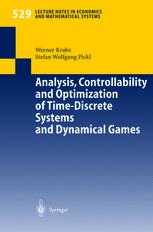

Most ebook files are in PDF format, so you can easily read them using various software such as Foxit Reader or directly on the Google Chrome browser.
Some ebook files are released by publishers in other formats such as .awz, .mobi, .epub, .fb2, etc. You may need to install specific software to read these formats on mobile/PC, such as Calibre.
Please read the tutorial at this link: https://ebookbell.com/faq
We offer FREE conversion to the popular formats you request; however, this may take some time. Therefore, right after payment, please email us, and we will try to provide the service as quickly as possible.
For some exceptional file formats or broken links (if any), please refrain from opening any disputes. Instead, email us first, and we will try to assist within a maximum of 6 hours.
EbookBell Team

4.4
72 reviewsJ. P. La Salle has developed in [20] a stability theory for systems of difference equations (see also [8]) which we introduce in the first chapter within the framework of metric spaces. The stability theory for such systems can also be found in [13] in a slightly modified form. We start with autonomous systems in the first section of chapter 1. After theoretical preparations we examine the localization of limit sets with the aid of Lyapunov Functions. Applying these Lyapunov Functions we can develop a stability theory for autonomous systems. If we linearize a non-linear system at a fixed point we are able to develop a stability theory for fixed points which makes use of the Frechet derivative at the fixed point. The next subsection deals with general linear systems for which we intro duce a new concept of stability and asymptotic stability that we adopt from [18]. Applications to various fields illustrate these results. We start with the classical predator-prey-model as being developed and investigated by Volterra which is based on a 2 x 2-system of first order differential equations for the densities of the prey and predator population, respectively. This model has also been investigated in [13] with respect to stability of its equilibrium via a Lyapunov function. Here we consider the discrete version of the model.